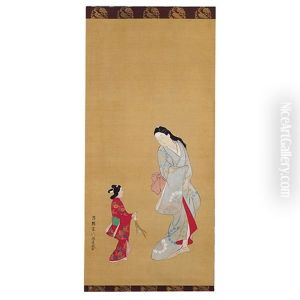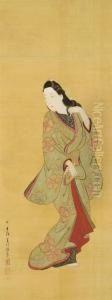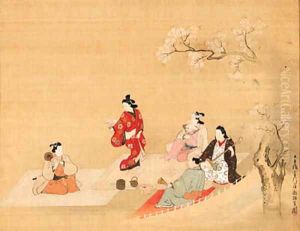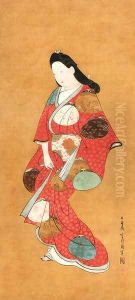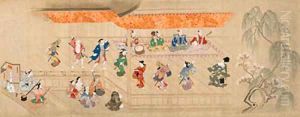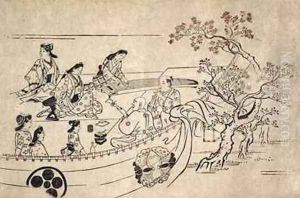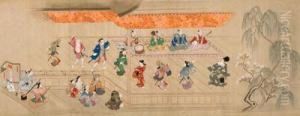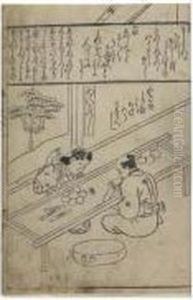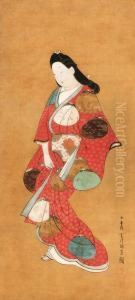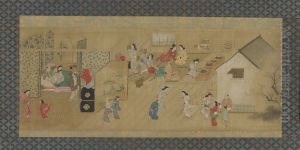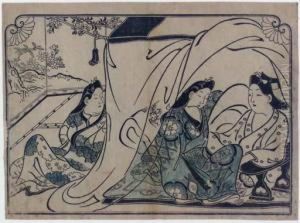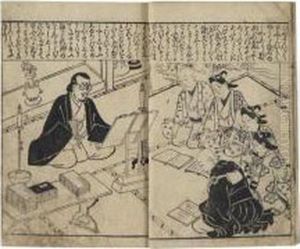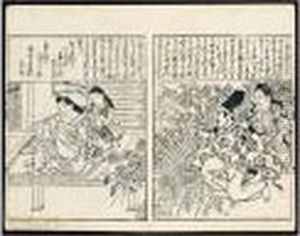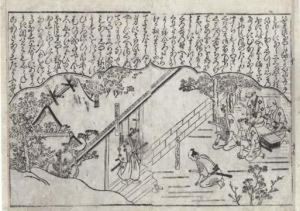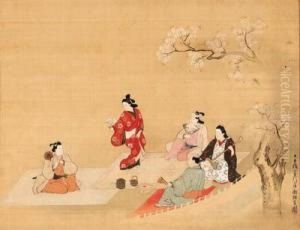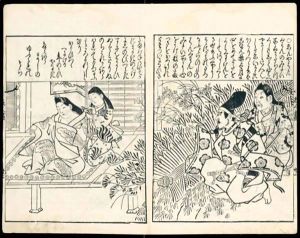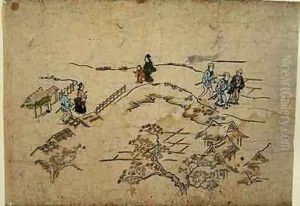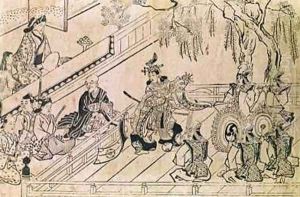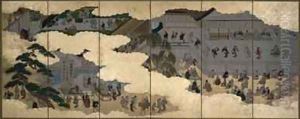Hishikawa Moronobu Paintings
Hishikawa Moronobu was a prominent Japanese artist, considered one of the founding figures of the ukiyo-e genre of woodblock prints and paintings. Born into a family of textile dyers in Awa Province (modern-day Chiba Prefecture), Moronobu moved to Edo (now Tokyo) in his early twenties. There, he trained in the Kano school of painting, which was the dominant style of painting at the time, known for its bold brush strokes and emphasis on Chinese themes. However, Moronobu's interests lay in depicting the contemporary life of his time, especially the burgeoning pleasure districts of Edo.
Moronobu's work spans a wide range of subjects, including scenes of daily life, kabuki actors, beautiful women (bijin-ga), and landscapes. He was not only a painter but also a skilled draughtsman, illustrator, and printmaker. By the mid-17th century, Moronobu had established himself as a leading figure in the art world of Edo, producing not only single-sheet prints but also illustrated books (ehon). His illustrated books, which often combined images with narratives, were particularly popular and played a significant role in the development of the ukiyo-e style.
Unlike later ukiyo-e artists who focused on single-sheet prints, Moronobu's body of work includes a significant number of hand-painted scrolls and screens, which were highly valued by his contemporaries. His style is characterized by dynamic compositions, a strong sense of line, and a clear narrative quality, which set the standard for future generations of ukiyo-e artists.
Moronobu's legacy extends beyond his contributions to the ukiyo-e genre. He is credited with establishing the foundation for the flourishing of ukiyo-e culture during the Edo period, influencing countless artists who followed in his footsteps. His works are preserved in major museums around the world, serving as a testament to his enduring impact on Japanese art and culture.
